“ Modern leather tanneries and the leather they make are frighteningly toxic. So toxic, that there are more tanneries than any other business on the Environmental Protection Agency’s (EPA) Superfund list, the list that identifies the priority environmental cleanups in the U.S. So toxic, that 95% of U.S. tanneries have moved their operations overseas to avoid environmental oversight penalties. So toxic, that many old tannery sites can’t be used for agriculture or built on or even sold.” Rowan Gabrielle, from “Leather for life” White Paper.
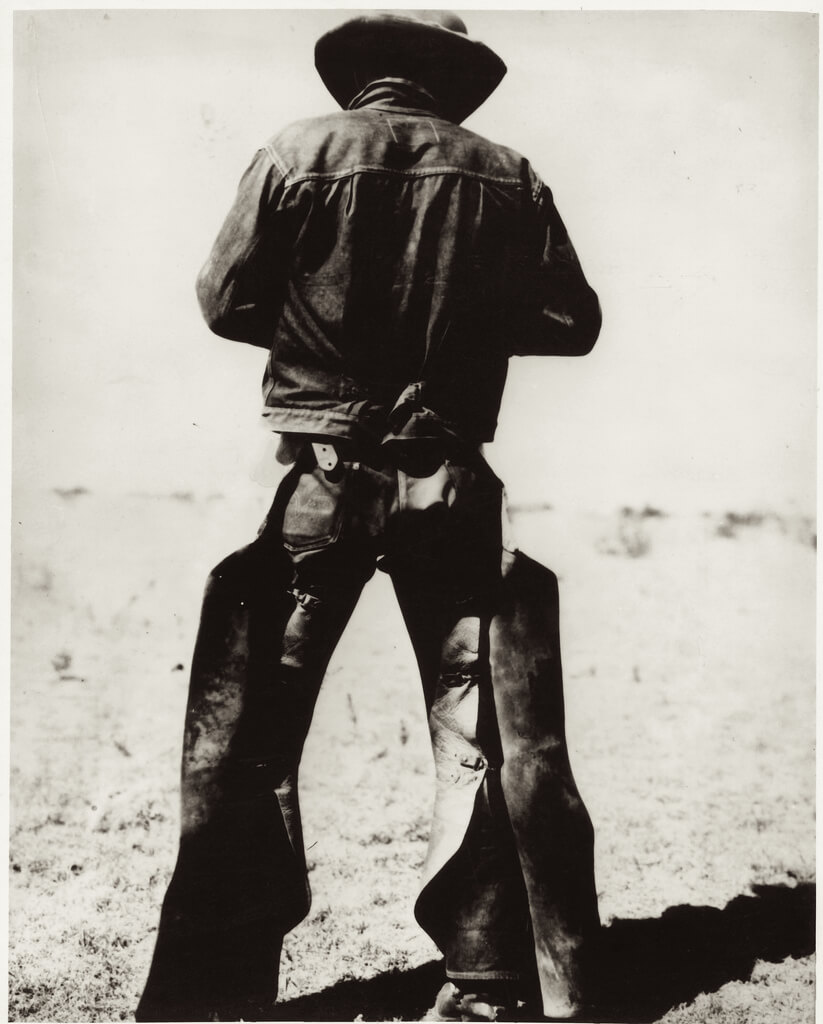 Photo Credit Trove General
Photo Credit Trove General
Que the picturesque rugged Cowboy riding into the dusk, the fearless motorcyclist cruising down an endless ribbon of deserted road, and the sultry S&M posing like the lovechild of Betty Page and Edward Scissorhands. Can you guess the thread, or textile, connecting them all? Yup, leather.
Leather’s rugged, almost everlasting, durability is not for the dainty. Its toughness is built to last and protect us through life’s toughest journeys. But what is behind the durable fabric? How is it made? In this piece we highlight the leather production process—both new and old, designers who are aiming to make it better, and how you can purchase smarter, more sustainable leather products.
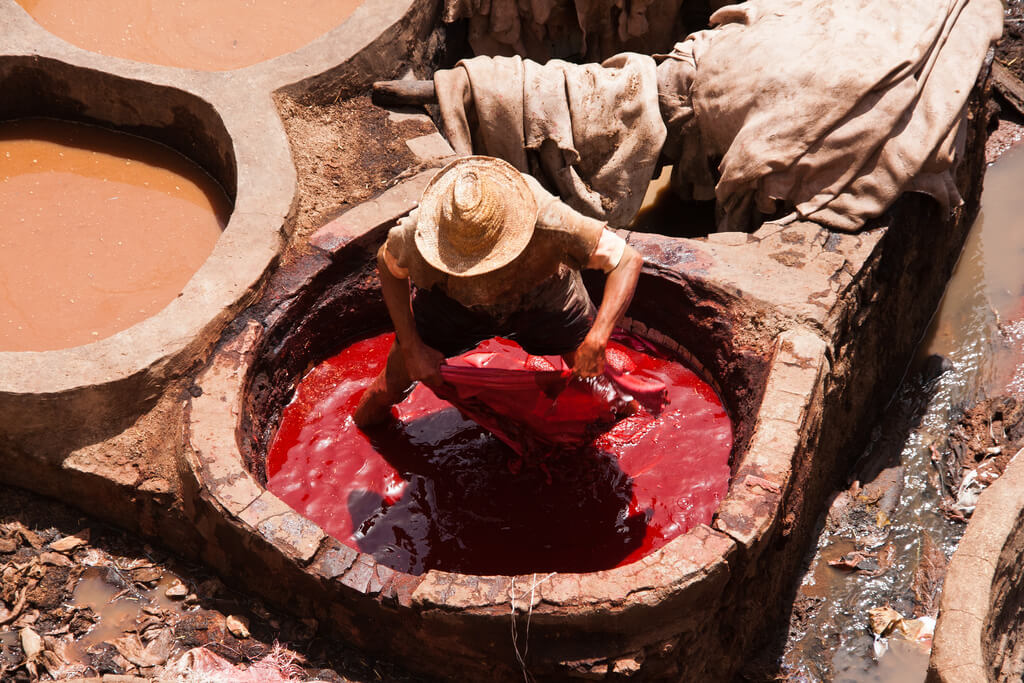
Leather is (usually) made from cows, though sometimes exotic skins like ostrich, stingray and crocodile hides are high street luxuries, and on the lower monetary end, PETA cites countries like China often use dog or cat skin for leather. Regardless, all animal skins can be used to create leather, and humans have done so hundreds of years.
The first known leather was created by rubbing animal fat onto the dried skins. But with today’s technological advances, and the diminishing use of artisan traditions, leather production is far more complicated than rubbing on some animal fat. In order for leather to transform from skin to textile, there are many steps along the way. It’s a precise and complicated process that’s energy, water and resource-intensive, typically with highly toxic chemicals used in each step.
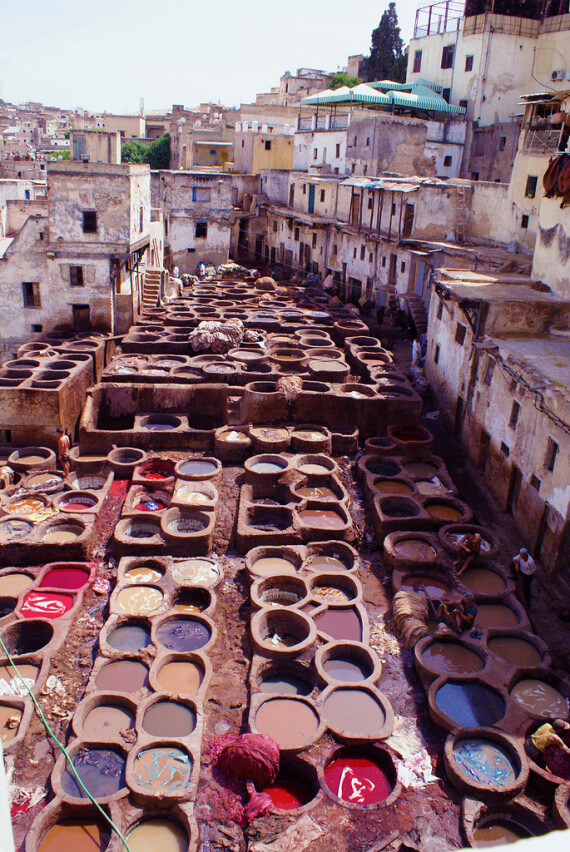
In Morocco, tanneries remain virtually unchanged since the middle-ages sit nestled into the Medina.
How Leather Is Made
First the leather must be treated to shape, soften and preserve it. The animal skins arrive to the tannery preserved in salts, and almost immediately, pieces are cut and separated into portions of sides, butts and shoulders. They are then soaked in lime to remove the hair and flesh, and then the skins become rawhide.
Enter bath two: the tanning process. Tanning softens the rawhide and preserves it from decomposition. In modern production, this is where most of the pollution in generated.
Ninety percent of the world’s tanneries use chromium, a toxic chemical, to tan cheaply and efficiently. Chromium leaves the water a pale blue color, known in the industry as ‘wet blue.’ Widespread since the 1890s, chromium softens the leather in a matter of hours. In countries with little to no environmental regulations, where much of the global leather is produced (China and India), the highly toxic effluent water is often dumped directly into rivers— it harms both tannery workers and local communities.
Once the leather undergoes the tanning process, it is crusted, meaning the skin is thinned, and finally colored and lubricated.
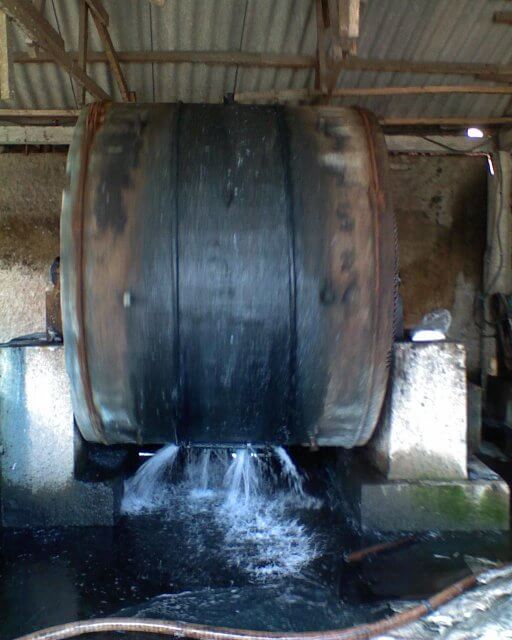
Vegetable Tanning
With increased consumer awareness and demand for a more ethical product, many companies are reviving traditional methods of leather production by cutting out the use of toxic chemicals like chromium. Known as vegetable tanning, the leather is soaked in a bath of tannins from bark and fruits for several weeks, instead of the above-mentioned chemicals. Although a slower process than chrome-tanning, the naturally occurring ingredients drastically reduce toxic pollution into water waste often to none at all. Currently, no certification exists for “naturally tanned leather”, but the USDA National Organic Program (NOP) ensures animals are raised organically and leather is tanned in a certified organic tannery.
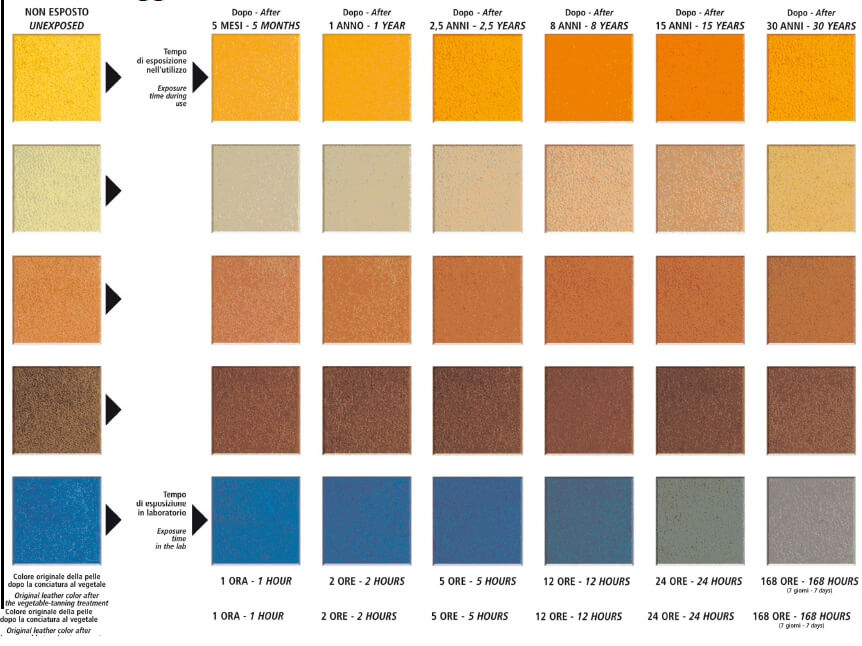 Photo credit Fashion Vortex
Photo credit Fashion Vortex
Conventional Leather Alternatives
So what are the best options if you like the look and feel (and durability) of leather?
1. Vegetable tanning: This method is much lower-impact (see above). Look for a label or information that says “vegetable tanned” or sometimes “naturally tanned.”
2. Recycled or upcycled leather: Because it is such a tough fabric, leather can be easily reused—think a cheesy leather jacket converted into a cool handbag, or a cool vintage leather couch made into belts. Usually these pieces will indicate that they are made with used leathers.
3. Vegan substitutes: These items can be made from any of a number of materials that look like leather, but are created from human-made materials. The upside is that animals weren’t harmed in the making of them. The downside is that oftentimes the non-leather fabrics are just as toxic as the leather (not always, some vegan designers look for ethically produced materials), and often they don’t last as long as leather. Usually marked or labelled with ‘man-made materials’ or specifics about what is used.
Many designers are stepping up to the consumer demand for cruelty-free and mindful leather, or products made with no animal skins at all. Some of our favorite companies leading the industry forward are:
Takes on a whole system approach to leather production by looking beyond the manufacturing process into ethical animal husbandry. The company also uses natural vegetable tanning.
A sophisticated clothing label that eliminates the use of animal products completely (vegan) as well as using eco-friendly fabrics in their leather-like pieces.
Gorgeous bags made from leather scraps, once discarded as waste from a motorcycle accessory facility in Pakistan.
Blends old world tradition with new technologies to create leather products tanned with rhubarb root, a native and abundant plant within the region of production.
A friend once watched a television special on the horrible conditions workers, especially children in less developed countries with little to no environmental regulation, are exposed to from working in tanneries. She said, “It’s so unfair. It’s going to take the world a long time to change.” It struck me, “It might take the world a long time to change its patterns, but how long is it going to take you?”
